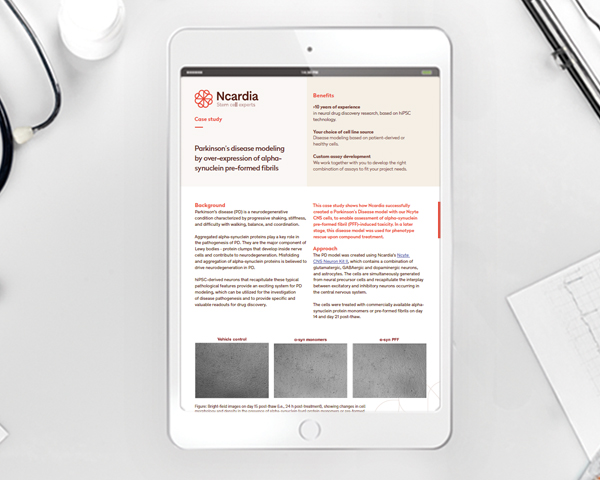Case study: Parkinson’s disease modelling for drug discovery
Posted: 11 May 2021 | Ncardia | No comments yet
The development of a Parkinson’s disease model, using hiPSC-derived neural cells, to assess alpha-synuclein pre-formed fibril-induced toxicity.
Misfolding and aggregation of alpha-synuclein proteins is believed to drive neurodegeneration, and plays a key role in the pathogenesis of Parkinson’s disease. Ncardia created a disease model from a co-culture of hiPSC-derived neurons and astrocytes, that recapitulate these typical pathological features, to enable investigation of the disease pathogenesis and to provide specific and valuable readouts for drug discovery for Parkinson’s disease.
Related content from this organisation
- Investigating the promising future of organoids
- Whitepaper: Advancing drug discovery for neurodegenerative diseases
- Right model, right complexity: using in vitro human disease cell models in drug discovery
- Targeting tau – chasing a treatment for Alzheimer’s
- Cellistic and Celyad Oncology announce GMP cell therapy manufacturing operations transaction
Related topics
Analytical Techniques, Assays, Bioengineering, Biomarkers, Biopharmaceuticals, Cell Cultures, Disease Research, Imaging, Regenerative Medicine, Screening, Stem Cells, Targets
Related organisations
Ncardia









